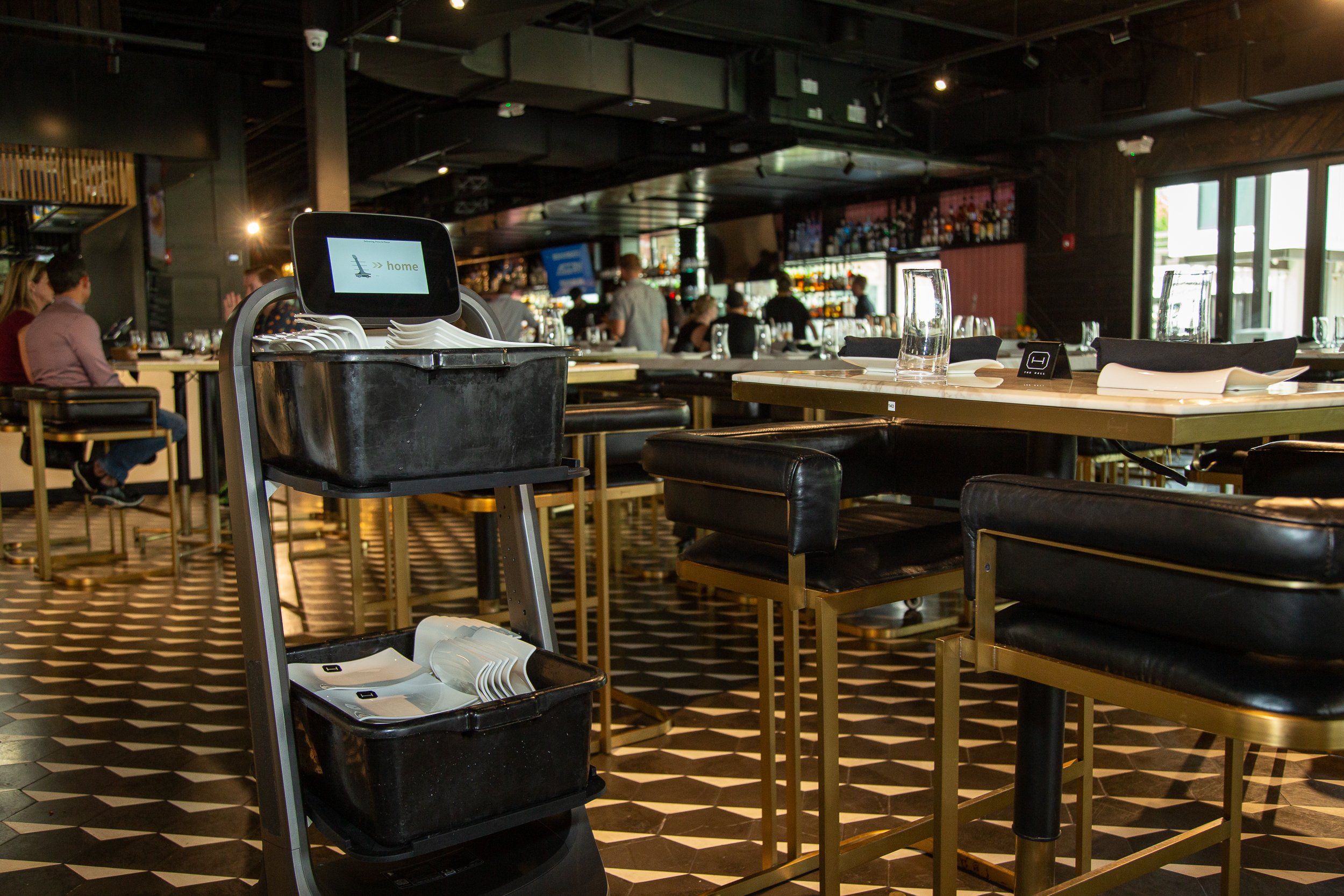The restaurant industry continues to adjust to labor challenges, even as demand for labor grows in the food service sector. In June 2022, the food service industry added about 41,000 jobs, although restaurant employment remains about 728,000 jobs behind its pre-pandemic high, according to the Bureau of Labor Statistics. The Bureau projects a 9% growth in demand for food service labor over the next decade, faster than the average for all occupations.
Restaurants are adapting to this challenge in many ways. Some are experimenting with benefits offerings and recruitment strategies. Others are limiting their menus or shortening operating hours. Still others are harnessing new tools to boost operational efficiency. Automation is increasingly being evaluated as a solution for supporting staff and coming up as a robust solution for mitigating the challenges of worker shortages.
Automation's Impact on on Labor Productivity
Automation has been proven to increase labor productivity in many industries. Human workers are often freed up by automating routine, predictable tasks to perform more valuable tasks. In fact, evidence indicates that automation helps transform today’s jobs, creating new potential career trajectories for human employees. Thanks to the operational efficiency of automation, this transformation can support the higher wages that many restaurants seek to use to attract staff.
According to a Sept. 2022 report from software company Capterra, front-of-house roles are ripe for automation today. In a survey of restaurant leaders, more than half agreed that many of the tasks drive-through operators, baristas, hosts, and cashiers do could be easily automated with today’s technology, allowing these individuals to shift into new roles.
Now the restaurant industry is evaluating how best to harness emerging automation solutions to increase productivity, maintain business continuity and even help companies scale sustainably in the face of ongoing labor shortages.
How Automation is Transforming Food Service
At its most effective, the introduction of automation solutions drives a change in processes and workflow. Often this involves shifting labor from one area to another. This is how restaurants achieve the operational efficiencies needed to keep running smoothly in the face of labor challenges, as noted in the following three examples.
1. Automation Shifts Dunkin' Labor from Order-Taking to Cooking
By automating order-taking, restaurant staff can prioritize food preparation and delivery. That’s the thinking driving the increase in digital-only restaurants and “ghost kitchens,” which exist without a physical restaurant front as they solely produce food for delivery or pickup based on phone or online orders.
Inspire Brands launched a number of drive-thru-only versions of its restaurant chains with the goal of eliminating the need for some front-of-house labor. When Inspire’s Dunkin’ chain opened its first digital-only store in 2021, it used staffing levels similar to traditional stores but reorganized how the staff operated. Rather than splitting time between taking and fulfilling orders, the team can focus solely on food preparation.
“We’ve never seen the kind of efficiency numbers that we get out of a [ghost kitchen] out of a standalone,” commented Shaun Jackson, executive director of risk management at Panda Restaurant Group, in an interview with Restaurant Dive. “When you eliminate the dining room, and you really have just third-party orders, it’s a phenomenal model for sustainability.”
2. Automation Moves White Castle Workers from Hot Fry Station to Hospitality
The Mokena, Ill., White Castle has faced staffing shortages since early 2020, remaining 8% below targeted staffing levels in late 2022. By installing Miso Robotics’ Flippy 2 to handle the fry station, the restaurant freed up one worker to operate the hospitality door, through which they could carry orders out to cars and greet customers to provide a “more personal” interaction.
The fry station typically requires two employees to oversee it, with one worker handling the repetitive movement of fry baskets in and out of boiling oil. Flippy 2 now automates that work, shifting one worker to a customer-facing role that can take the pressure off drive-thru employees.
This automation has driven a tremendous increase in productivity, with 15% to 25% faster order times and overall improvement in drive-thru service. Moreover, the restaurant chain has found that the costs of installation and monthly service for Flippy 2 are competitive with the costs of staffing the fryer. According to Restaurant Dive, this efficiency improvement is driving White Castle to deploy Flippy 2 in nearly one-third of its stores by the end of 2023.
3. Automation Moves Labor from Bussing Back to Customer Interaction
In the reverse of the approach taken by Inspire, new solutions are emerging to automate food running and bussing to allow more time for order-taking and other customer-facing interactions. X1, an autonomous food service solution from Gausium and SoftBank Robotics, comes equipped with several serving trays and an array of sensors that ensure a collision-free course to its destination.
X1 can run food and beverages to several tables at a time. It automatically follows the most efficient path to tables or the kitchen while navigating in real-time around customers, employees, furniture, and any other potential obstacles.
In addition to assisting with food running, X1 helps servers more efficiently bus tables so they can spend more time with customers and turn over tables quicker. The first fleet of X1s in the U.S. are successfully streamlining service for The Hall On The Yard, a full-service food hall featuring nine restaurants in Orlando, Fla.
Get a Better Balance Between Automation and Labor
Part of the experimentation taking place today with automation in restaurants is due to the extended nature of these labor shortages. As the food service industry grows, many restaurants recognize that it is not likely to return to earlier staffing levels due to broader workforce shifts.
“There is no doubt the entire restaurant industry is seeing a drastic decline in candidates,” commented John Moody, co-founder and chief strategist at management platform Restaurant365, in an interview with SHRM Online. “The source of the labor shortage is being heavily debated, and many are pointing to wages, as the industry historically hasn't paid its people enough, but most experts are linking it to a slew of different factors pressuring the labor market at the same time.”
Restaurants that seek to remain competitive in the face of these different factors will find their success lies in driving workforce transformation enabled by new technology solutions.
Ready to transform? Restaurant owners and operators that speak to a SoftBank Robotics automation expert about the X1 autonomous food service solution by December 16, 2022, can receive a special First Mover benefit in addition to honing their competitive edge. To learn more about how automation can support your workforce transformation, contact SoftBank Robotics today.






